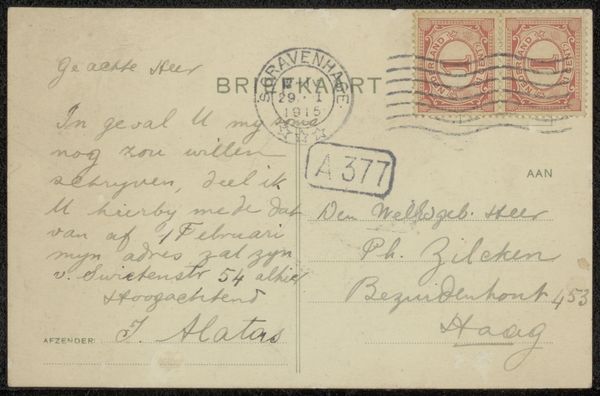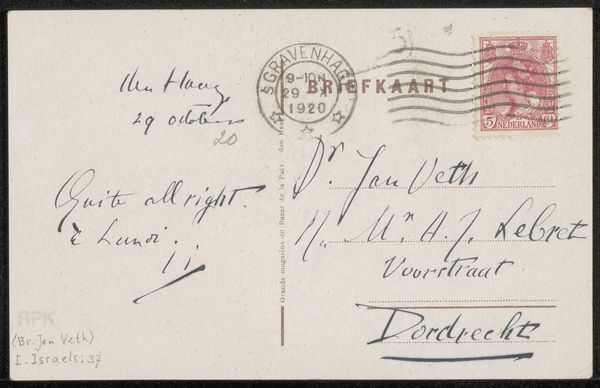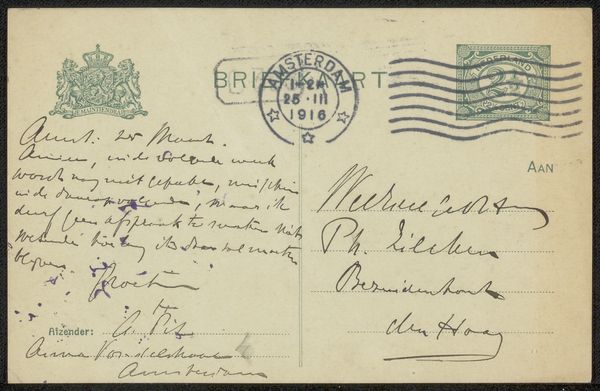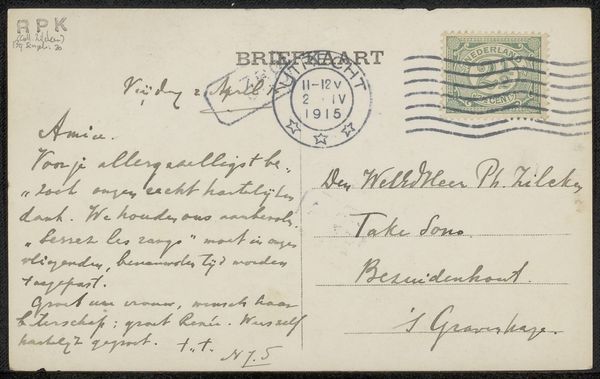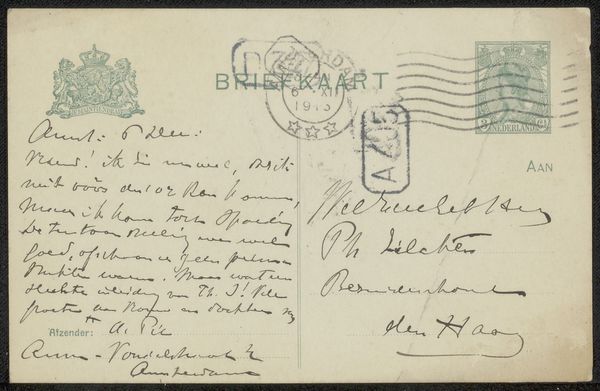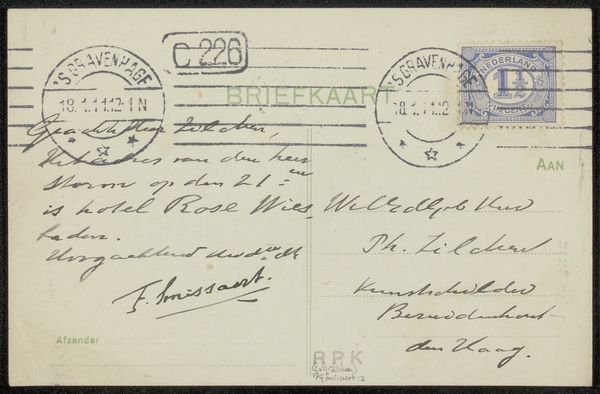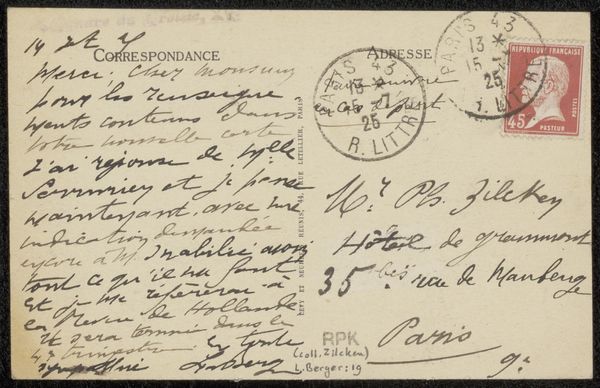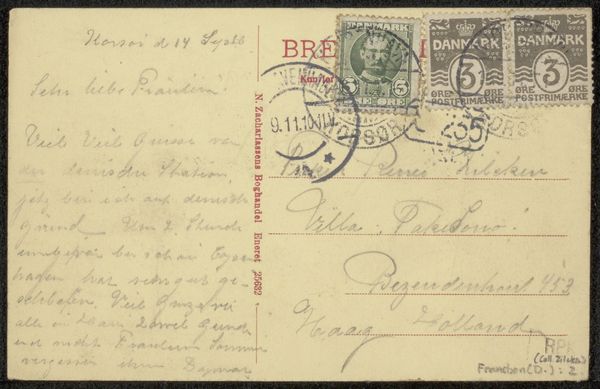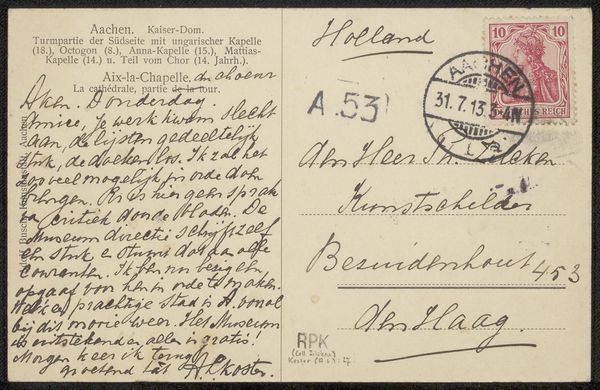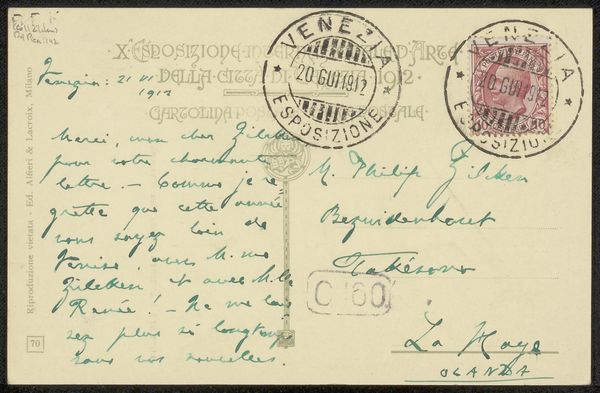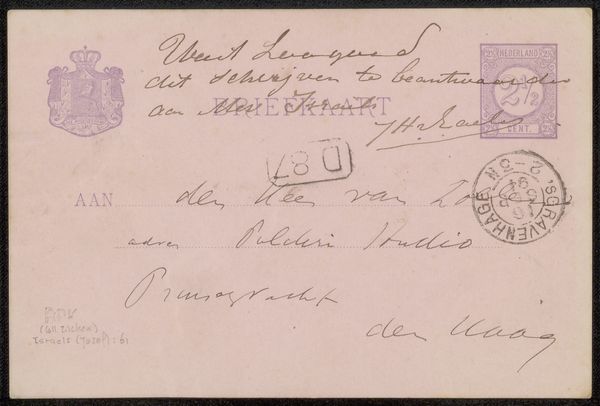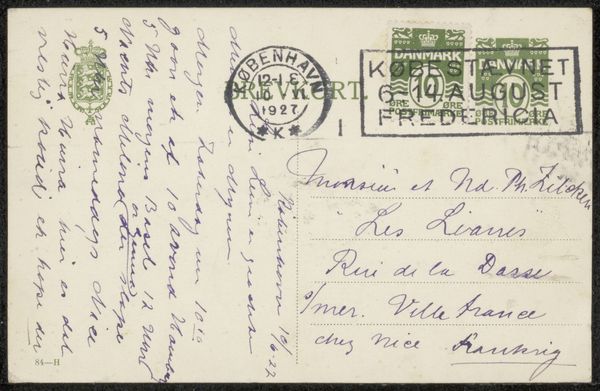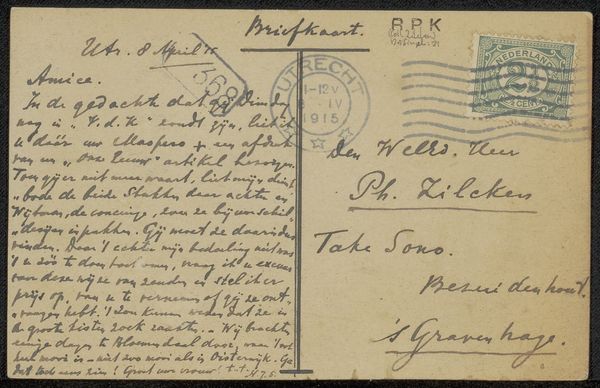
drawing, paper, ink, pen
#
drawing
#
comic strip sketch
#
pen illustration
#
pen sketch
#
hand drawn type
#
paper
#
personal sketchbook
#
ink
#
ink drawing experimentation
#
intimism
#
pen-ink sketch
#
pen work
#
sketchbook drawing
#
pen
#
sketchbook art
#
calligraphy
Copyright: Rijks Museum: Open Domain
Curator: Chap van Deventer’s "Briefkaart aan Jan Veth," likely created between 1914 and 1920, offers us a glimpse into personal correspondence during a tumultuous historical period. Executed in ink on paper, this piece reflects a quick, intimate exchange. Editor: It's immediate, isn’t it? The handwritten text, the smudged postmark—they all create a sense of immediacy, as though we're eavesdropping on a private conversation. There’s an urgency I feel, even without understanding the language. Curator: Indeed. The work transcends language because of the inherent intimacy of its form. Think of postcards; they existed as both a personal and public declaration. Examining Van Deventer's choice of medium in this context offers fascinating insights. Given that it was written at the cusp of massive social upheaval with many gendered impacts during the war, do you see how this could influence art's form and intimate nature? Editor: Absolutely. It calls to mind the fragility of human connection amidst such turmoil. The address itself, meticulously penned, becomes a symbol. It’s an anchor in a world spiraling into chaos. The repetition of specific forms within handwriting like the curls, add another layer for emotional interpretation, speaking beyond just the functional purpose of giving directions. Curator: The visual weight of script has always shaped how the words resonate across culture, a reflection of broader communicative techniques throughout society. Van Deventer might also be responding to artistic intimism in broader culture and challenging or perhaps simply subverting some formal structures. This piece captures an everyday interaction and its cultural function so that you are reading it not only literally. How do such everyday, historical, forms relate with social hierarchies and cultural assumptions. Editor: I’m intrigued by the address of the postcard recipient. This connects it to a specific location and community with their particular characteristics in the world at that moment. Thinking of maps, cartography, or networks of association that branch out around this place, how many stories might the postcard elicit? Curator: Precisely. That layering is integral to the art's power. Van Deventer is using familiar cultural motifs while inviting a contemporary reassessment of intimism's role, in an era marked by shifting personal relationships and communications during wartime. Editor: Thinking about these intimate details as threads in an interlinked context makes me really pause and remember those threads of lived realities throughout history and the marks on people like us as individuals, not simply populations. Curator: Agreed. I leave this encounter wanting to reread correspondence as historical evidence about society. Editor: Yes, what a perfect way to show how messages hold significance across different social groups, contexts, and audiences.
Comments
No comments
Be the first to comment and join the conversation on the ultimate creative platform.
